Lateral Load Deck Connector Options
Get to know the options for this structural insurance policy, meant to tie the deck to the house without relying on the ledger.
Jump to all the videos in this series
One section addressing deck construction in the IRC has been consistent through every version. “… decks shall be positively anchored to the primary structure and designed for both vertical and lateral loads.” The bolts or screws that attach a deck ledger to the rim joist of the house handle the vertical loads – those due to gravity. But what are lateral loads? Lateral loads are those that pull the deck away from the house. A simple example is people moving around on a deck. Quantifying lateral loads is difficult and for years there were no prescriptive designs / systems for a lateral load connection leaving deck builders and code inspectors to figure it out.
First attempt to add lateral load connectors to the building code
In the 2007 IRC code supplement a new illustration showing a lateral load connection was introduced. It showed metal connectors fastened to a joist in the floor of the house and a joist in the deck with a long bolt or threaded rod linking the two connectors. The code language was confusing. Some readers thought this specific connection design was required for all decks but that isn’t the case. The illustration was presented as a prescriptive lateral load connection that would fulfill the lateral load resistance requirement when two of the linkages are installed on a deck.
Even though the lateral load connection shown in the code wasn’t required, its publication elevated the awareness that decks needed to include lateral load resistance connections. It’s still up to the local building department to decide what constitutes an adequate lateral load connection. The local code official has the authority to approve other methods a deck designer and builder would like to use for lateral load resistance; so check with your local building department.
Code changes make the connection process simpler
A new illustration was published in the 2015 IRC showing a simpler lateral load connection than the original. It shows a connector fastened to a deck joist with a screw driven 3 in. into the mudsill or top plate of a wall. Four of the connections are needed on a deck to qualify for lateral load resistance. The connection works on new homes and simplifies new deck construction on an old house. An important thing to note about the connection is that the code limits its use to decks where the deck joists are parallel to the house joists. In other words, decks along the wall of a house where the house joists rest on and are nailed to the mudsill or top plate. It can’t be used on decks connected to walls where the joists run parallel to the rim joist. Your local building official does have the authority to permit using the connection along these walls but that would be on a case-by-case basis.
Lateral load connection articles
- Attach a Deck to Any Wall
- A new code requirement for decks
- New Lateral Load Connection in 2015 IRC
- Retrofit Lateral Load Connection for Decks
- Attaching a Deck
- Simpson Strong-Tie DTT1Z Deck Tension Tie
- MiTek LTS19-TZ Deck Lateral Load Connector
Hardware information
Videos in the Series
-
How to Install and Flash a Deck Ledger, Start to Finish
-
Options for Fastening a Deck Ledger
-
Attach a Deck Ledger Over Brick, Foam, and Other Thick Claddings
-
Deck Footing Options
-
Options for Fastening Deck Posts to Footings
-
Options for Fastening Beams to Deck Posts
-
Installing Deck Joists
-
Lateral Load Deck Connector Options
-
Options for Fastening Deck Guardrails
-
Building Strong Deck Stairs

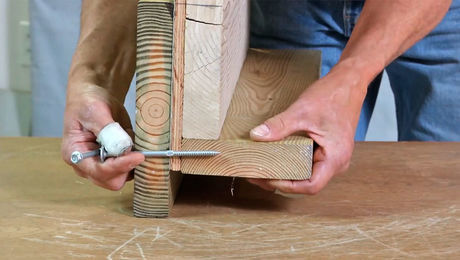
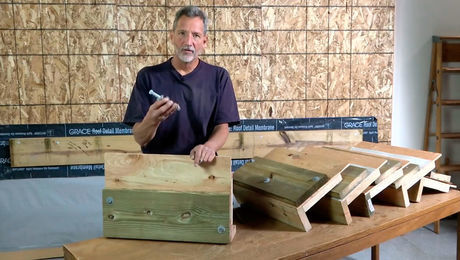
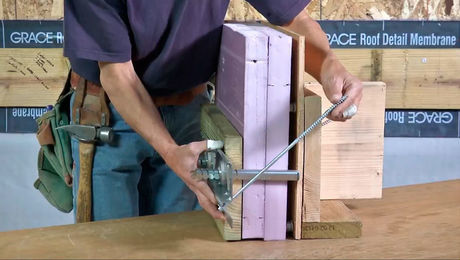
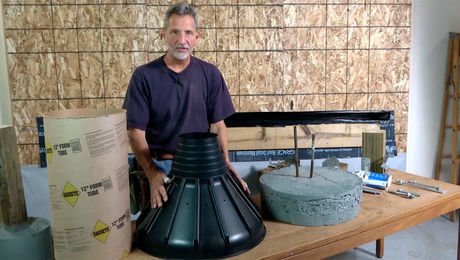
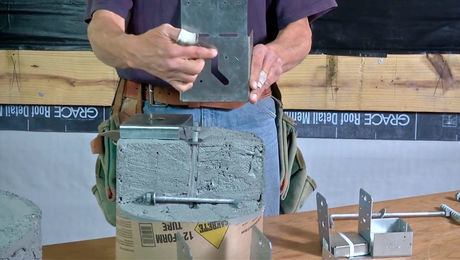
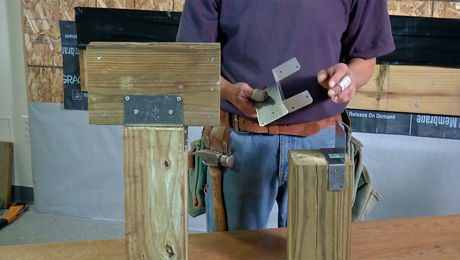

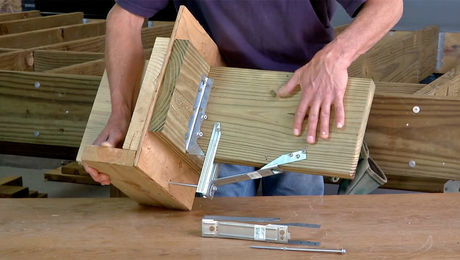
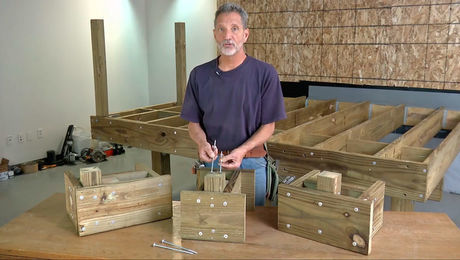
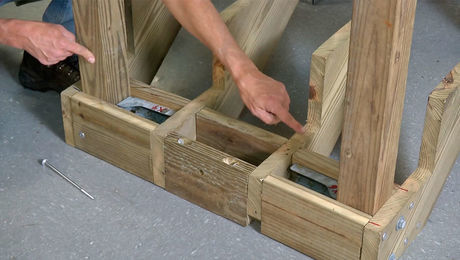





View Comments
Hello, my house was built in 1973, and there is a large deck around the house that needs repair by replacing posts and beams. The deck does not have a ledger board, and it seems like the joists are coming from behind the brick wall. I was wondering if my deck does not have a ledger board, and it looks like the joists are connected to the structure of the house behind the brick wall. Should I add any lateral load deck connector?
Thanks for any advice you can provide me with